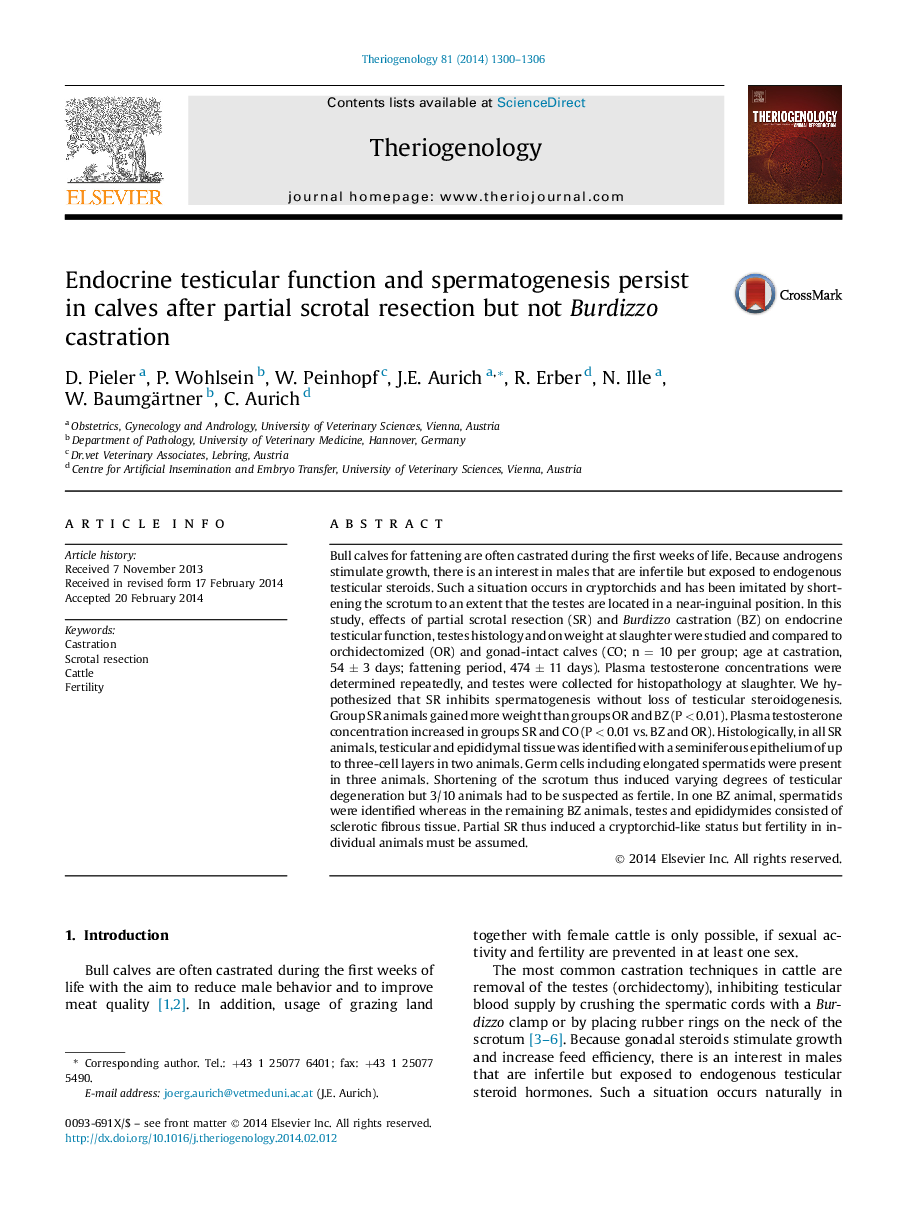| Article ID | Journal | Published Year | Pages | File Type |
|---|---|---|---|---|
| 2097221 | Theriogenology | 2014 | 7 Pages |
Bull calves for fattening are often castrated during the first weeks of life. Because androgens stimulate growth, there is an interest in males that are infertile but exposed to endogenous testicular steroids. Such a situation occurs in cryptorchids and has been imitated by shortening the scrotum to an extent that the testes are located in a near-inguinal position. In this study, effects of partial scrotal resection (SR) and Burdizzo castration (BZ) on endocrine testicular function, testes histology and on weight at slaughter were studied and compared to orchidectomized (OR) and gonad-intact calves (CO; n = 10 per group; age at castration, 54 ± 3 days; fattening period, 474 ± 11 days). Plasma testosterone concentrations were determined repeatedly, and testes were collected for histopathology at slaughter. We hypothesized that SR inhibits spermatogenesis without loss of testicular steroidogenesis. Group SR animals gained more weight than groups OR and BZ (P < 0.01). Plasma testosterone concentration increased in groups SR and CO (P < 0.01 vs. BZ and OR). Histologically, in all SR animals, testicular and epididymal tissue was identified with a seminiferous epithelium of up to three-cell layers in two animals. Germ cells including elongated spermatids were present in three animals. Shortening of the scrotum thus induced varying degrees of testicular degeneration but 3/10 animals had to be suspected as fertile. In one BZ animal, spermatids were identified whereas in the remaining BZ animals, testes and epididymides consisted of sclerotic fibrous tissue. Partial SR thus induced a cryptorchid-like status but fertility in individual animals must be assumed.
